Search Images
Browse Content (p. 1435)
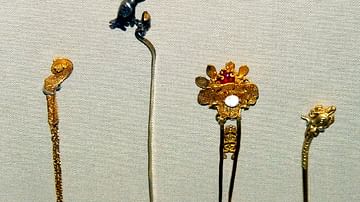
Image
Chinese Hairpins
Gold hairpins dating from the Tang Dynasty to the 7th century CE.

Image
Lantern Festival
In ancient China, the Lantern Festival was held on the 15th day of the first lunar month to conclude the New Year's celebration. This was a festival of light honoring the full moon when people would float lighted lanterns on ponds, lakes...
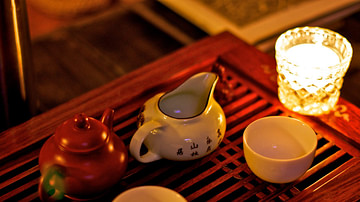
Image
Chinese Tea Ceremony
The Tea Ceremony is an elaborate ritual of respect in which people take tea together. The person who prepares the tea honors her guests through her preparations and presentation, and the guests pay her respect by participating properly.
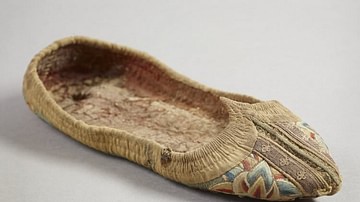
Image
Silk & Textile Shoe from China
6th-7th century CE Chinese shoe composed by two halves joined at the back of the heel and at the toe. The halves are made of superimposed layers of woolen and hemp textiles stitched together and bound with silk along the edges. The sole is...
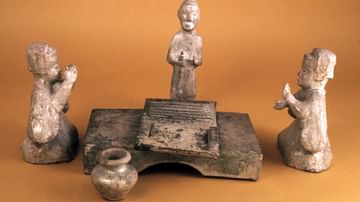
Image
Chinese Board Game
Group of earthenware figures thought to be playing a game of "Liu Bo". Found in a Han Dynasty (1st-2nd century CE) burial.
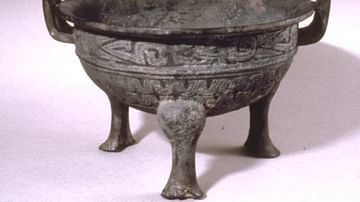
Image
Ding
Eastern Zhou Dynasty (c. 8th century BCE) bronze ding, used for cooking.
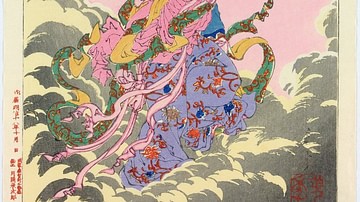
Image
Chang'e Flees to the Moon
Colour woodblock print by Yoshitoshi from 19th century CE Japan, showing the Chinese woman Chang'e journeying to the moon, where she becomes the deity Xi Wang Mu, the "Queen Mother of the West".
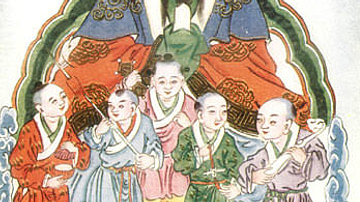
Image
Zao-Shen, the Kitchen God
Zao-Shen, the Kitchen God as depicted in Myths & Legends of China by Werner, E. T. C. (1922). New York: George G. Harrap & Co. Ltd.
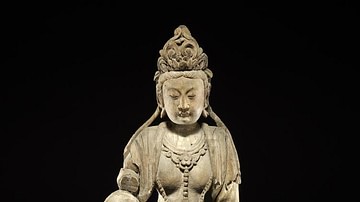
Image
Guanyin
The goddess Guanyin, wooden figure from China, 12th century.
The British Museum, London.
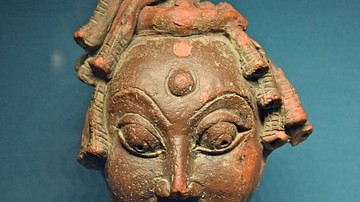
Image
Shiva
A terracotta head of Shiva. He has the matted hair of an ascetic and on his forehead is the third eye of wisdom. 400-500 CE, northern India. (Ashmolean Museum, Oxford)